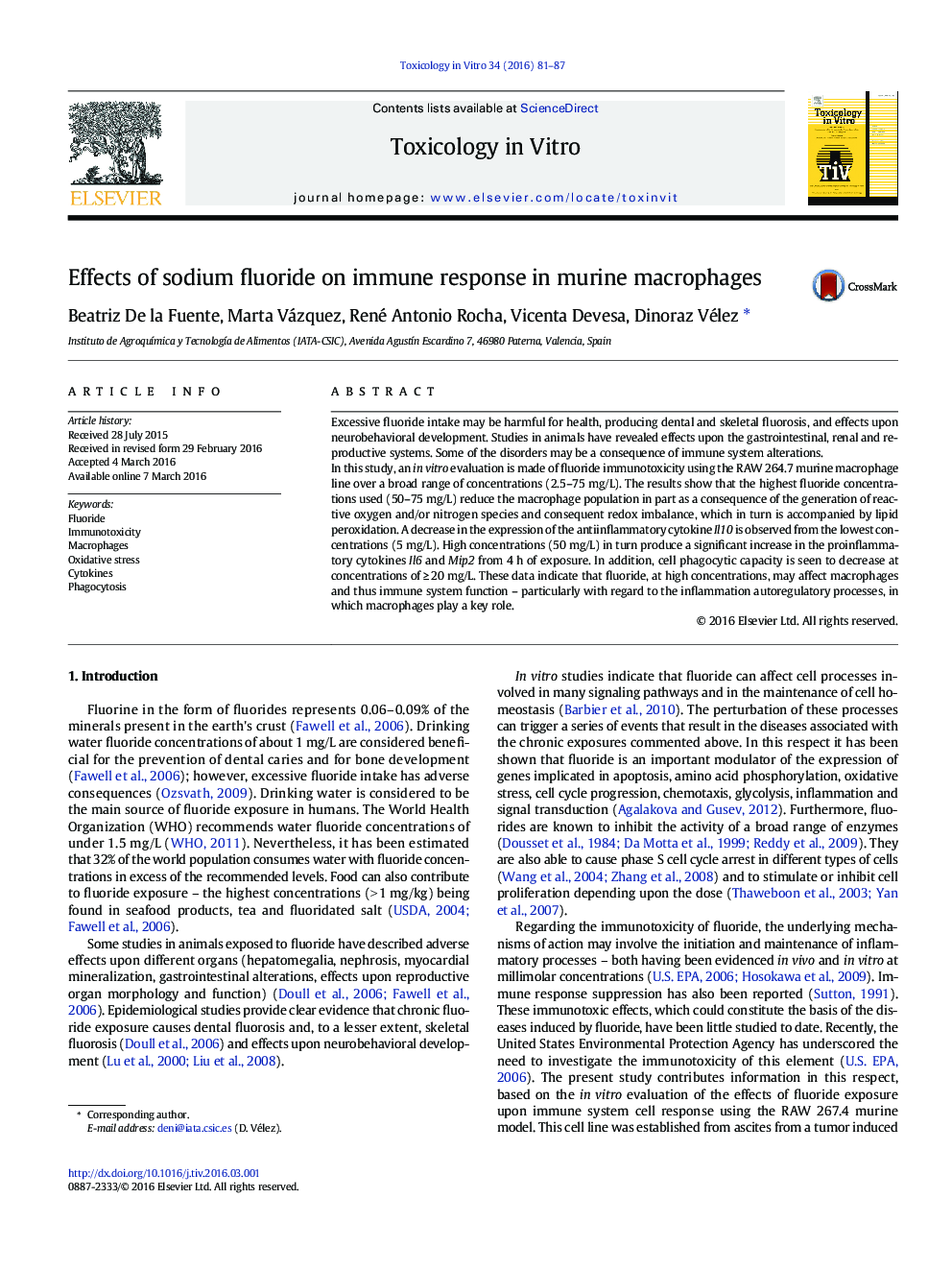| Article ID | Journal | Published Year | Pages | File Type |
|---|---|---|---|---|
| 5861072 | Toxicology in Vitro | 2016 | 7 Pages |
Abstract
In this study, an in vitro evaluation is made of fluoride immunotoxicity using the RAW 264.7 murine macrophage line over a broad range of concentrations (2.5-75 mg/L). The results show that the highest fluoride concentrations used (50-75 mg/L) reduce the macrophage population in part as a consequence of the generation of reactive oxygen and/or nitrogen species and consequent redox imbalance, which in turn is accompanied by lipid peroxidation. A decrease in the expression of the antiinflammatory cytokine Il10 is observed from the lowest concentrations (5 mg/L). High concentrations (50 mg/L) in turn produce a significant increase in the proinflammatory cytokines Il6 and Mip2 from 4 h of exposure. In addition, cell phagocytic capacity is seen to decrease at concentrations of â¥Â 20 mg/L. These data indicate that fluoride, at high concentrations, may affect macrophages and thus immune system function - particularly with regard to the inflammation autoregulatory processes, in which macrophages play a key role.
Related Topics
Life Sciences
Environmental Science
Health, Toxicology and Mutagenesis
Authors
Beatriz De la Fuente, Marta Vázquez, René Antonio Rocha, Vicenta Devesa, Dinoraz Vélez,
